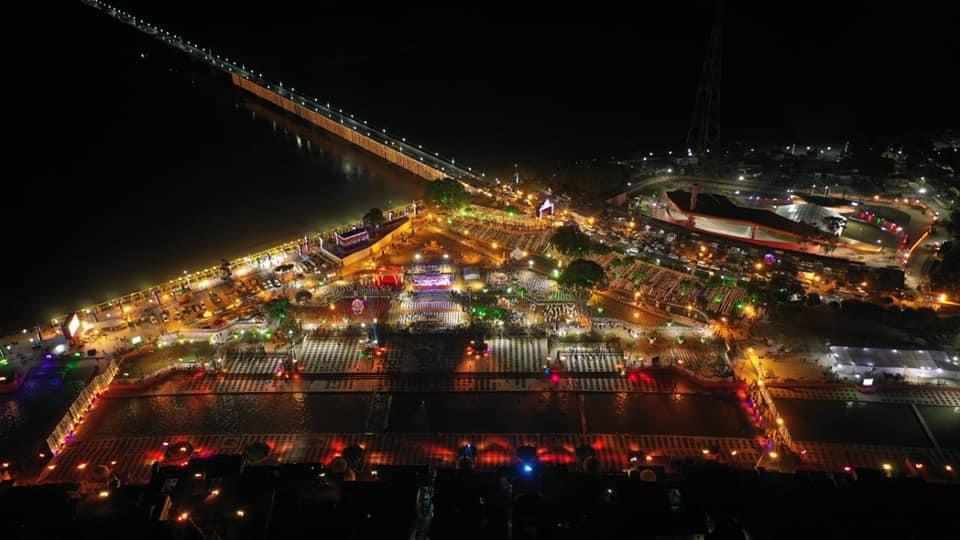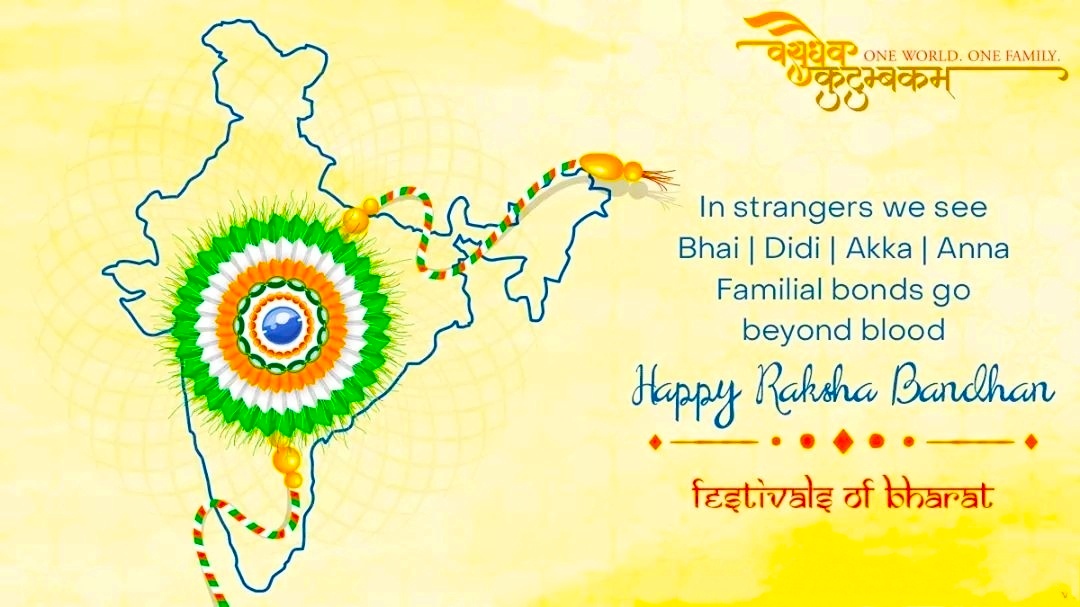The Science behind Tradition, Cultural & Spiritual of Deepavali Festival & Fireworks (Crackers)❣️🕉️🚩💞🙏
The Science behind Tradition, Cultural & Spiritual of Deepavali Festival & Fireworks(Crackers)❣️🕉️🚩💞🙏
‘Deepa’ means light or lamp, ‘aavali’ means a row. Deepavali means a ROW OF LIGHTS. It is Festival of Lights.
Diwali is the spoken form of the word Deepavali.
We celebrate the Victory of Good over Evil. Good is light and Evil is darkness. It is the most famous festivals of the Hindu festivals. In some parts of India, they celebrate it for four days.
A lot of things about Deepavali History , Cultural & Scientific mention below :
'Dhan' in sanskrit means wealth. "The first wealth is health. Diwali begins with thanksgiving to the one who gave us Ayurveda. The second is mental wealth, a feeling of abundance. Feel abundance and see that all the darkness is gone.”
1. Bhagwan Shri Krishna Killed a demon called Narakasura. So we call that day Naraka Chathurdasi, literally Naraka’s 14th day.
2. Goddess Lakshmi came out of the Milky ocean when Devas and Asuras churned the ocean for Amrutha, i.e. ambrosia.
3. Bhagwan Shri Rama returned to Ayodhya after defeating Ravana of Sri Lanka who abducted Shri Rama’s wife Sita.
 |
 |
4. Pandavas came out of the forest after their 12 year banishment. So to celebrate all these things they decorated the houses and streets with row of lamps. The reason being, it was Amavasya-new moon day where there was no light. Most of other Hindu festivals fall on Full Moon day, so there is natural moon light. We have to remember there was no electric light thousands of years ago.
The above four episodes give us a Big lesson. Victory of Good doesn’t come that easily. Bhagwan Shri Rama suffered for 14 years, Pandavas suffered for 12+1 years. Goddess Lakshmi, that is wealth, doesn’t come easily. You will have to churn the ocean, that isthrough hard work. Krishna had to travel all the way from Dwaraka in Gujarat to Kamaroop in Assam to kill Narakasura. To achieve success in anything, you have to struggle hard, but final victory will be yours.
5. Jains also celebrate Diwali, because one of the greatest Thirthankaras, Mahavira, a contemporary of Buddha, attained Niravana- equivalent to Yogi’s Samadhi on a Diwali day.
6. Sikhs also celebrate Diwali because the foundation for Golden Temple in Amritsar was laid on the day. Guru Amardas called all Sikhs to get Gurus’s blessings on that day, like Hindu’s Vyasa Purnima. One of the ten Sikh gurus Hari Govinda Sing was released from imprisonment by Mughal emperor Jehangir on that day.
7. Arya Samaj followers consider it a holy day because its founder Dayananda Sarswati attained Samadhi on that day.
8. There are many more reasons. Greatest of the Hindu Kings Vikramaditya was crowned on a Diwali day.
9. For Gujaratis and other business men it is a NEW YEAR DAY. They start their Financial year on that day.
Lakshmi Puja and Kubra Puja are conducted during the four day celebrations. Gujaratis heap food and sweets like mountains in a festival called Annakut festival.
But I am going to give you some new information on Diwali.
10.A for astronomy:
Why do we celebrate Diwali on different dates every year? Diwali doesn’t fall on the same day like New Years day or Makara sankaranti (Pongal). Why?
Most of the Hindu festivals are based on Lunar Calendar. That is, they are based on the movements of Moon. Diwali is one of them.
But other festivals are based on solar calendar. That is to say they are based on the movement of Sun. So they will fall on almost same date every year except in leap years.
Thithi & Nakshatra
Some people are very keen to do a festival on a particular Thithi like Amavasya, Paurnami, Ashtami Navami etc. Some Hindus are very keen to do it on Nakshatra, that is the star under which one born or one event happened. So even birthdays like Rama, Krishna, Adi Shankara differ slightly between Hindus.
11. Why do we light lamps?
The philosophical explanation for this is light symbolises all good things in the world. Darkness stands for evil, fear and death. So we always need light. But the scientific explanation for this is in winter months a lot of insects multiply and destroy crops. When you light lamps in millions they come and fall in it. You don’t kill them and so you don’t earn sin/demerits. It is the innate nature of the insects that they are attracted to light and die.
 Bonfire nights are celebrated around the world. Even in England coinciding with Diwali comes Guy Fawkes Day on 5th November every year. This story was invented recently. Bonfires are lighted throughout Northern Hemisphere in November even before Guy Fawkes. It is in most of the cultures. We see it even in African and Australian aboriginal cultures.
Bonfire nights are celebrated around the world. Even in England coinciding with Diwali comes Guy Fawkes Day on 5th November every year. This story was invented recently. Bonfires are lighted throughout Northern Hemisphere in November even before Guy Fawkes. It is in most of the cultures. We see it even in African and Australian aboriginal cultures.Other than killing insects, it gives warmth during the cold winter. It gives them an opportunity to gather together, think together and act together. They sing and dance in groups. Music and dance originated around fire in the caves millions of years ago.
Even the oldest religious book Rig Veda begins with Fire/Agni and ends with Fire/Agni.
In South India, one month after Diwali on Karhtikai Pournami day (Full Moon Day), every town and village do the bonfires. Millions of lamps are lighted in Houses and Temples. They are made up of recyclable materials like clay. The oil used for those lamps is special oil called ILUPPA ENNEI with some medicinal properties.
12.Why do we do fireworks?
We, human beings, are pyromaniacs. What is pyromania?
According to Oxford Dictionary Pyromania is AN OBSESSIVE DESIRE TO SET FIRE TO THINGS. This is in our genes. If it is not properly controlled or channelized this becomes a mental disease. Since we all lived in caves millions of years ago, the only help we had from nature is FIRE. The Greek word for fire is Pyro.
In August 2010, Londoners saw big riots. Youths enraged by the police action set fire to buildings, houses and shops. Properties worth millions of pounds were lost. In India, during each Bandh or Hartal day we see such arson attacks. The reason for this, according to social scientists, is we have NOT channelized this pyromania. Youths have tremendous energy to spend. If you ask them to do controlled destruction like setting fire to bonfires or fireworks, they would not do it to buildings. Hinduism is based fully on science. Knowing this pyromania our forefathers allowed you to do controlled destruction and arson. You can burn old things without affecting your neighbourhood on Diwali day, Karthikai Day or Bogi Day. Bogi is celebrated a day before Makara Sankaranti called Pongal in Tamil Nadu.
Parents would have noticed their children messing around with fire or lamps. Smelling smoke, elders would rush to the place and chastise children shouting “ Stop it. You are going to burn down the house”. In fact most of us have done it when we were young!
Now a days children and youths are not given that opportunity. So they misbehave during riots.
One may wonder why western countries are spending billions of dollars in doing fireworks during Olympics or Independence Days or Bonfire Nights. Laser lights can do the same magic without contributing to pollution at a minimum cost. The reason is as I mentioned earlier we are still pyromaniacs. The habit we had millions of years ago in the caves into protect ourselves from animals, to cook food for us and to get warmth is still in our genes.
This is the reason we encourage our children to do fireworks, bonfires and lighting lamps under the supervision of elders.
There are minor reasons as well. In certain cultures they believe the fireworks such as crackers will scare away evil spirits. In place like Sabarimalai Ayyappan temple, they even use it for scaring away the wild animals. In Tamil Nadu they do use explosives to announce the Gods procession. Hearing that, people from distant streets come to the streets where Gods chariot or procession in is on its way.
Chinese discovered the effect of some chemicals and started making fireworks. In Tamil Nadu the minor crackers are still called Chini Charam/chini vedi meaning China crackers.
DEEPAVALI CLEANING :
Scientific Reason
People starts cleaning or renovation of the house. As soon as Chaumasa (Rainy Season) ends, several Hindustani starts cleaning of the house. Bharat is tropical country where most of the dust is generated from heat and side by side, rainy season produced several insects / germs. It was old tradition that once rainy season is over and humidity reached to low then we Hindustani starts cleaning of the house either whitewash or applying cow-dung (old house) which was used as disinfect. This removed / killed germs / insects from houses. Further a cleaned house is always good to maintain healthy life.
At this time of the year people around the world are getting ready to celebrate Diwali, the festival of lights. One of the biggest festivals of the East.
And today is called “Dhanteras” – Dhanteras means the day of wealth.
It means feeling a sense of abundance, and whatever is needed will come! Remember all the blessings you have received in life and feel grateful for it.
The tradition is to put all the wealth you have earned in front of you and feel the abundance. When you feel lack, the lack grows but when you put your attention on abundance, then the abundance grows. In the Arthashastra, Chanakya says, “Dharmasya Moolam Arthah,” which means, “prosperity is the root of righteousness.”
Diwali symbolizes the victory of good over evil, light over darkness and knowledge over ignorance.
For an oil lamp to burn, the wick has to be partially immersed in the oil. If the wick is completely drowned in oil, it cannot bring light. Life is like the wick of the lamp, you have to be in the world and yet remain untouched by it. If you are drowned in the materialism of the world, you cannot bring joy and knowledge in your life. By being in the world, yet not drowning in the worldly aspect of it, we can be the light of joy and knowledge.
Significance and Importance of Lighting Diyas – Reason behind Lighting Diyas
- Diyas represents goodness and purity. It is said that evil spirits and negative forces gain power and become active when there is no light. So, diyas are lit to weaken those negative energies. Lighting also symbolizes good luck and knowledge.
- Depending upon the occasion, ghee, mustard oil, neem oil and sesame seeds oils are used to light diyas. Oil or ghee in the diya represents our vaasanas (negative tendencies) like jealousy, greed, hatred and ego. When we light oil or ghee diyas, the vaasanas exhaust slowly and the ego perishes.
- The flame of a diya always burns upwards which aims to acquire such knowledge that would take us towards higher ideals.
- A diya represents the victory of good over evil, knowledge over ignorance. It spreads goodness and positivity.
- Diyas are lit at the entrance of homes because they bring success and prosperity into our lives.
- Lighting diyas bring positive energy to the place and people around it.
- The lighting of a diya indicates new beginnings and happy moments.
- During monsoon, the air is moist and is filled with bacteria. The heat produced from the diya helps in cleaning the air.
- Diyas are environment friendly. They don’t leave a harmful residue.
- The light of the diya isn’t dependent on electricity, hence it saves a lot of electricity.
- Magnesium present in oil reacts with sulfur and carbon oxides present in the air to form sulfate and carbonate. The heavier elements fall to the ground, thereby making the air lighter.
- The heat in the light destroys bacteria, viruses, etc. present in the air.
Diwali is the commemoration of the light of wisdom in our lives.
Lamps are lit on this day not just to decorate homes, but also to communicate this profound truth of life. Light the lamp of wisdom and love in every heart and bring a radiant smile on every face. Diwali is also called Deepavali, which literally means rows of lights. Life has many facets and stages to it and it is important that you throw light on each of them, for life to be fully expressed. The rows of lights remind you that every aspect of life needs your attention and the light of knowledge.
Every human being has some good qualities. And every lamp that you light is symbolic of this. Some people have forbearance, some have love, strength, generosity, while others have the ability to unite people. The latent values in you are like a lamp. Don’t be satisfied with lighting just one lamp; light a thousand! You need to light many lights to dispel the darkness of ignorance. By lighting the lamp of wisdom in yourself and acquiring knowledge, you awaken all facets of your being. When they are lit and awakened, it is Diwali.
Diwali means to be in the present.
So drop the regrets of the past and the worries of the future and live in the moment. It is a time to forget the bickering and negativities that have happened through the year. It is a time when you throw light on the wisdom you have gained and welcome a new beginning.
Celebration is the nature of the spirit. The ancient sages brought sacredness in every celebration, so that you don’t lose the focus in the hustle-bustle of the activity. Observing rituals and religious practices (called Puja) is simply showing one’s gratitude to the Divine. This brings depth to the celebration.
For the one who does not have spiritual knowledge, Diwali comes only once a year, but for the wise, Diwali is every moment and every day.
Is there any scientific reason behind the tradition of Deepavali fireworks?
Yes.There is Before delving into it, let’s first examine the condition of water bodies throughout the year. As all of us might have noticed, there would hardly be any stagnant water during summer. Thanks to the intensive summer heat & high temperature, any small body of stagnant water evaporates quickly.
Next, we have the rainy season. Since rains inundate almost every part of the topography, stagnant water during rainy season would be rare. Due to incessant rains for weeks, the water would always be in circulation or free flow, and never get a chance to stagnate.
Now, consider the transition from rainy to winter season which occurs at around October-November. This is the time when the water accumulated in trenches & shallow topography zones, start getting stagnated. Unlike the high temperature of summer heat, the low temperature of cold winter do not evaporate these stagnant water bodies easily. Hence, they end up becoming breeding ground for insects, especially mosquitoes, which then leads to spread of contaminable diseases.
This seasonal cycle is not something which started just a few decades ago but have been going on forever since time immemorial. i.e Seasons like Summer, Rainy, Winter, etc have been going on for centuries, since time immemorial. Since Hinduism is the oldest religion in the world (acknowledged by even the most eminent historians), it was but natural for the Hindus of ancient times to tackle this insect/mosquito menace emanating from stagnant water.
The Hindus, who were already experts in the Sciences of Yoga & Ayurveda, thousands of years ago itself, had all the relevant knowledge back then, to come up with a solution, which could actually be carried out as a fun-filled tradition so that it could be sustained & passed on across generations. From the previous discussions, we had come across evidences which prove that ancient India knew of saltpetre.
With the knowledge of saltpetre, one of the simplest ways of using it to destroy such insects, was to use them in tiny explosives or sparklers, which could release Potassium-Nitrate, which in turn could destroy germs & hence curb dangerous insects. In fact, even today, saltpetre is used as basic ingredient in home-remedy-kits to prepare mosquito-repellents.
Thus it can be deduced that, the Hindus, thousands of years ago, came up with such simple yet effective solution of destroying harmful disease-borne-insects & germs, by simply exploding firecrackers (or lighting up as sparklers), in which saltpetre was the basic ingredient, thereby keeping water-borne & contaminable diseases at bay.
This reasoning has been established by scientific community as well, including health research scientists & doctors.For example, in 2003, when Delhi was reeling under Dengue, the city corporation’s senior health officials & doctors had requested the Delhi Govt to allow people to follow their traditional custom of firecrackers, so that it could curb the mosquito menace, and in turn automatically tackle Dengue problem in Delhi.The following news report from 2003 sheds more light into the health officers’ reasoning:
Few years later, in 2006, when Dengue menace was again on the rise in Delhi, scentists & health officers had actually advised people to fire up crackers & light sparklers to put an end to the mosquito menace, as reported in the following news article. This backing from the scientific community gives further fillip to the scientific basis of tradition.
Recently, few scientists had even patented the technique of using fireworks to curb mosquitoes.
SantoshKumar B Pandey at 1.25Am.



























%20(1).jpeg)


























Comments
Post a Comment